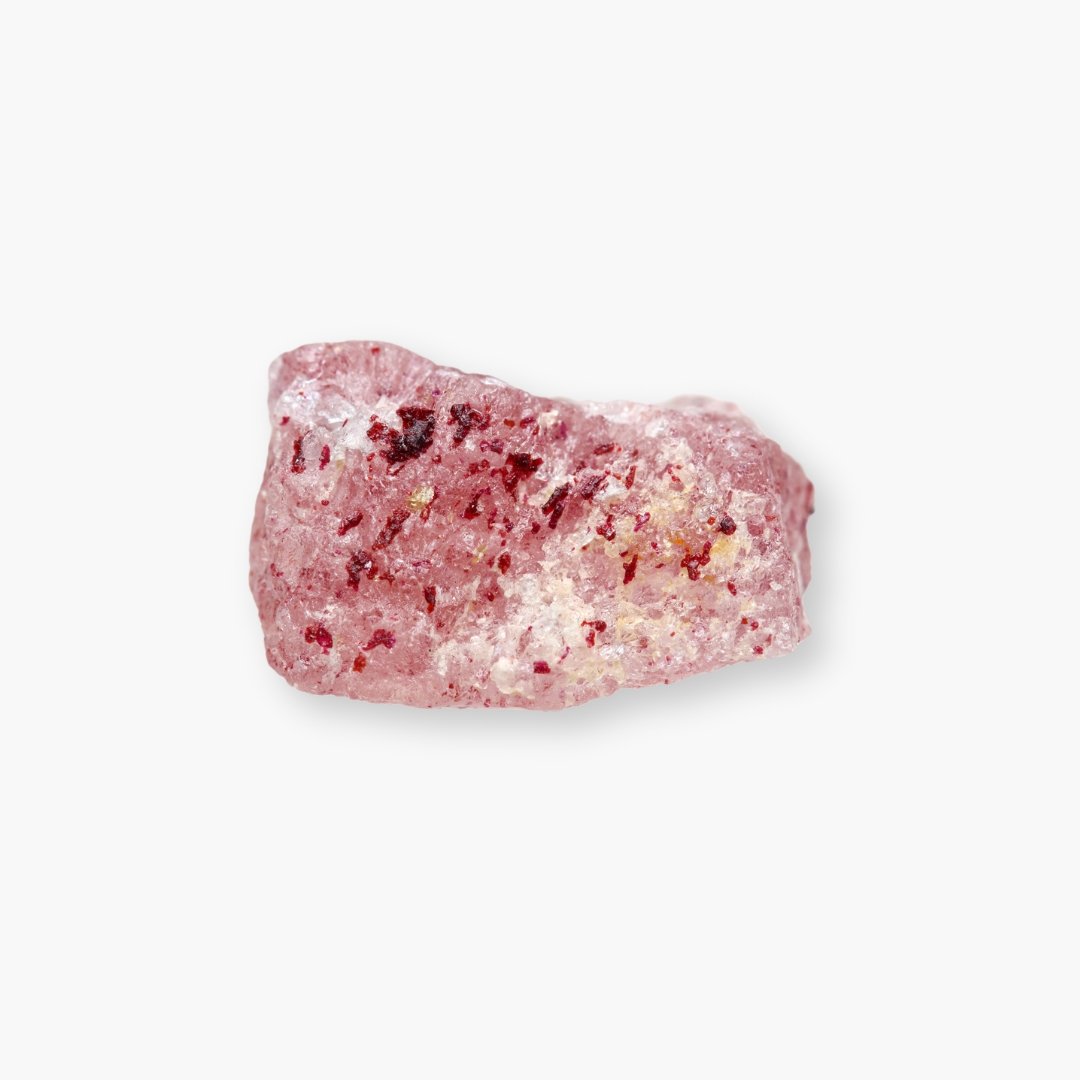amethyst
About
Amethyst is a purple variety of quartz. Its colour ranges from light lavender to deep violet, often displaying varying shades within a single crystal. The vibrant hues are caused by the presence of iron impurities and natural irradiation. Amethyst is well known for its durability and clarity, making it a popular choice for jewellery and spiritual practices.
Birthstones & Anniversaries
Amethyst is the traditional birthstone for February.
Crystal Healing Energy
The overarching theme of amethyst is spiritual growth and protection. It is often associated with tranquillity, wisdom, and emotional balance, making it a popular stone for meditation and spiritual work.
Amethyst is linked to the crown chakra and is believed to enhance intuition and spiritual connection. Its calming energy helps to quiet the mind, making it excellent for stress relief, while also acting as a protective shield against negative energy and psychic attack. Amethyst’s energy is soothing yet powerful, perfect for those seeking clarity, healing, and spiritual growth.
Facts
Brazil's Mines: Brazil is one of the largest producers of high-quality amethyst today.
Royal Gem: It was once considered as valuable as rubies and emeralds.
Geode Formation: Amethyst commonly forms in large geodes found in volcanic rocks.
Heat Treatment: Heat can turn amethyst into citrine.
Science
Mineral: Quartz
Crystal System: Trigonal
Chemistry: SiO₂
Colour: Purple, from light to deep violet
Refractive Index: 1.544 to 1.553
Birefringence: 0.009
Specific Gravity: 2.65
Mohs Hardness: 7
TreatmentsAmethyst is sometimes heat-treated to enhance its colour or to produce citrine. Lower-quality amethyst may also undergo irradiation to improve colour saturation.
SyntheticsSynthetic amethyst exists and is often created using hydrothermal processes, which replicate the natural growth conditions of quartz. Synthetic versions can be difficult to distinguish from natural amethyst without advanced testing.
ImitationsAmethyst can be imitated by glass or other dyed materials that mimic its purple hues. Synthetic spinel and coloured glass are common imitators in the jewellery industry.
similar materialsPurple Sapphire: This rarer gem can be mistaken for amethyst due to its similar colour.
Fluorite: Can be found in similar shades of purple but is softer and has a lower refractive index.
Amethyst Gallery
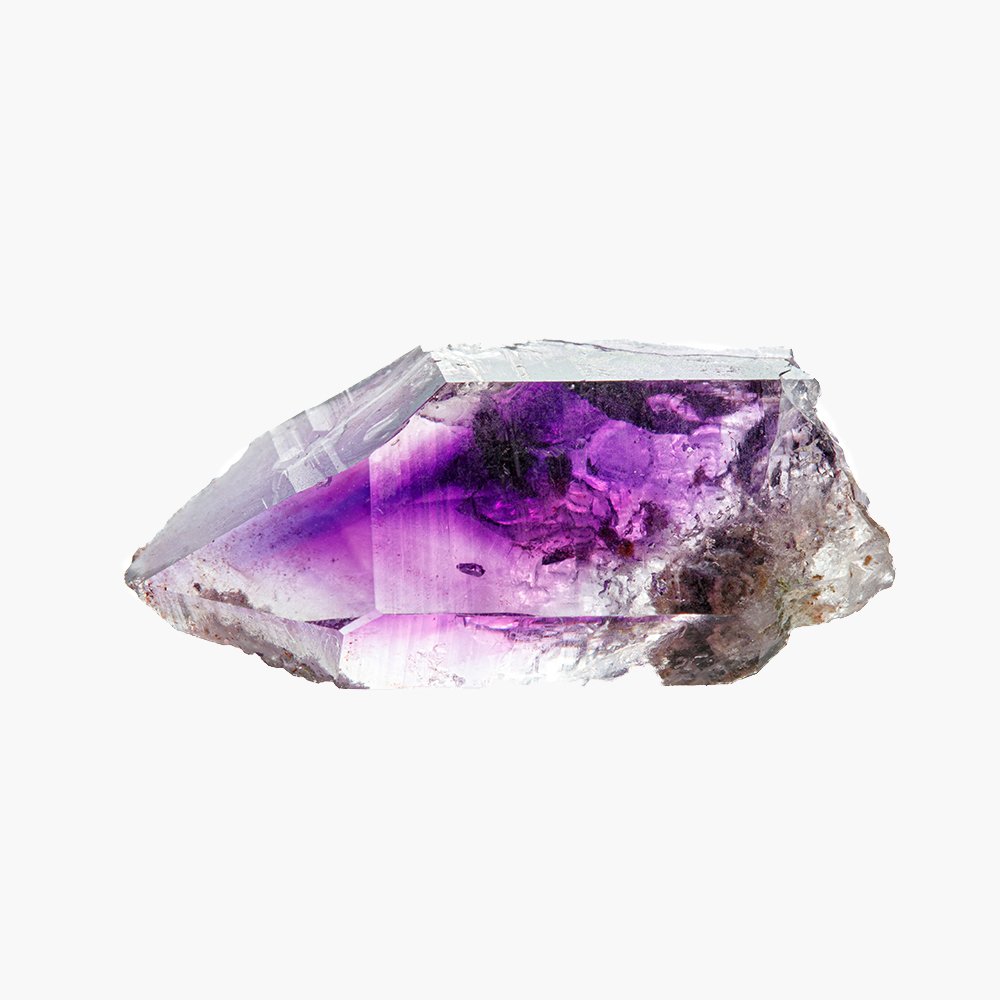
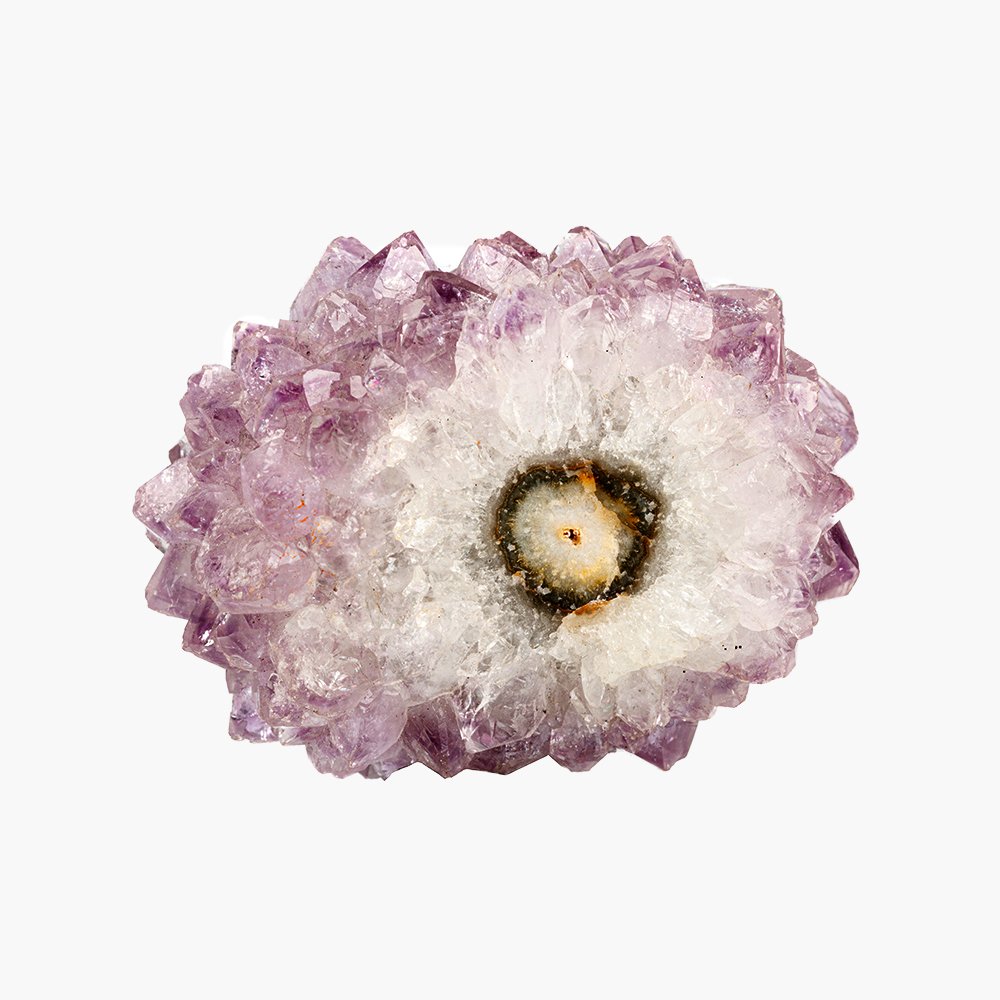
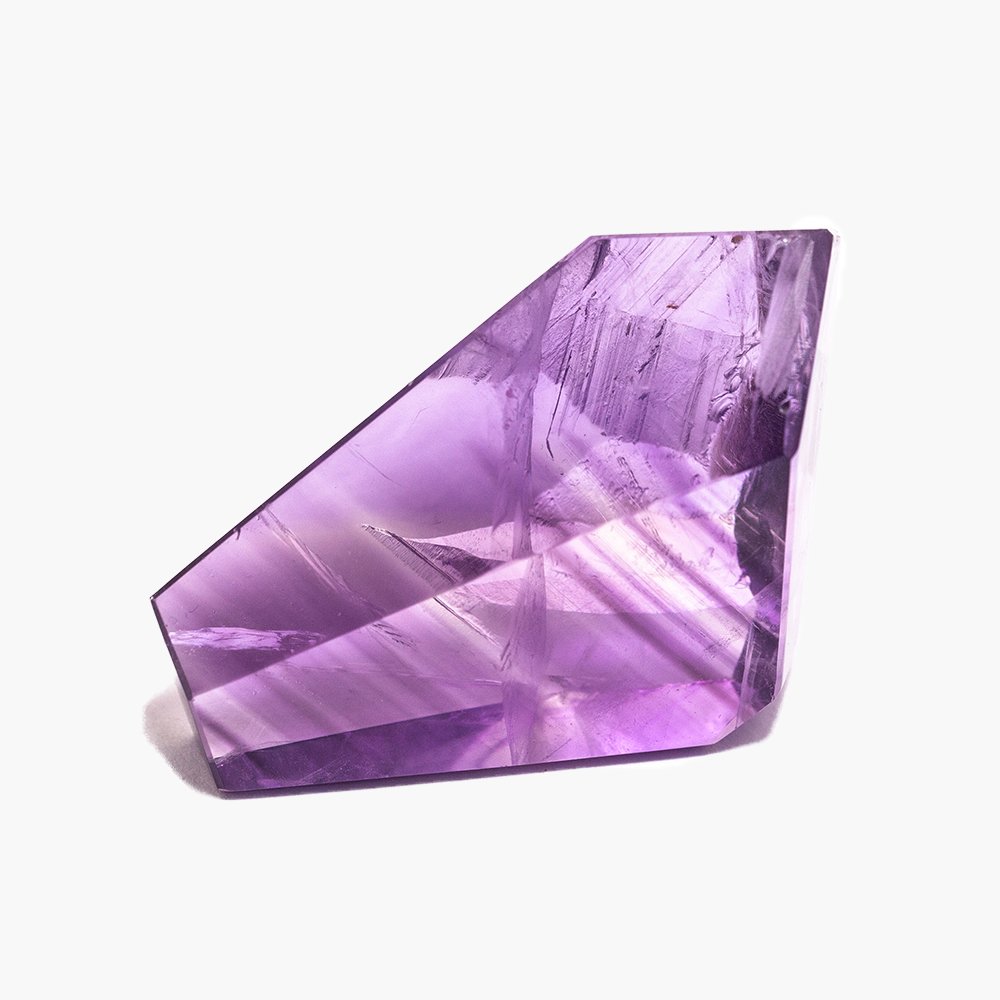
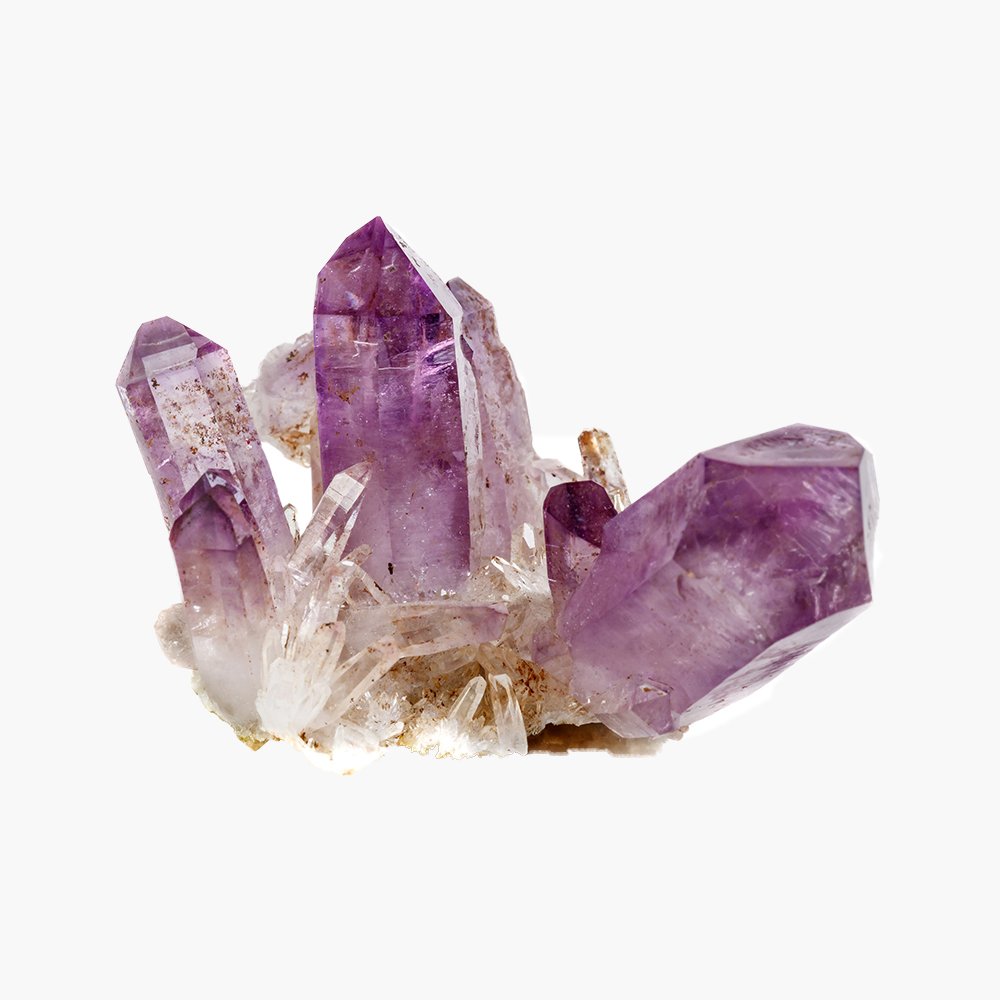
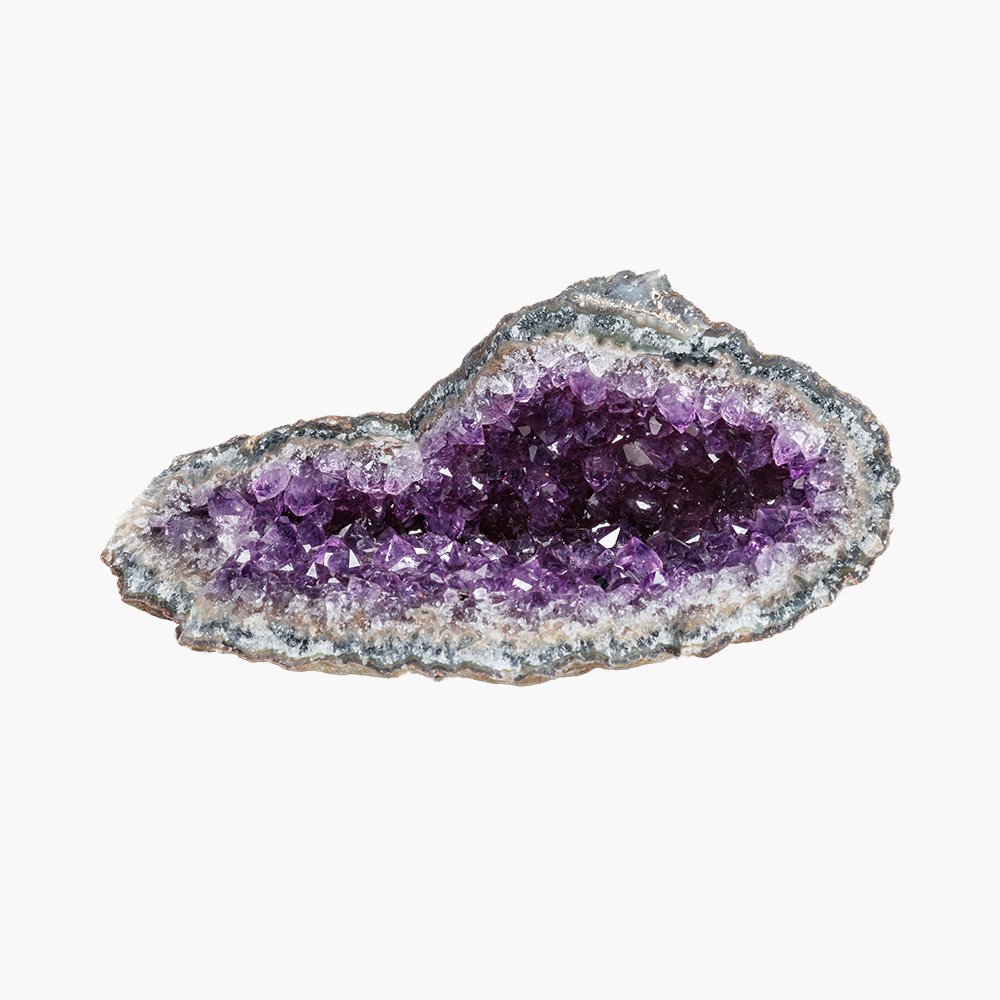
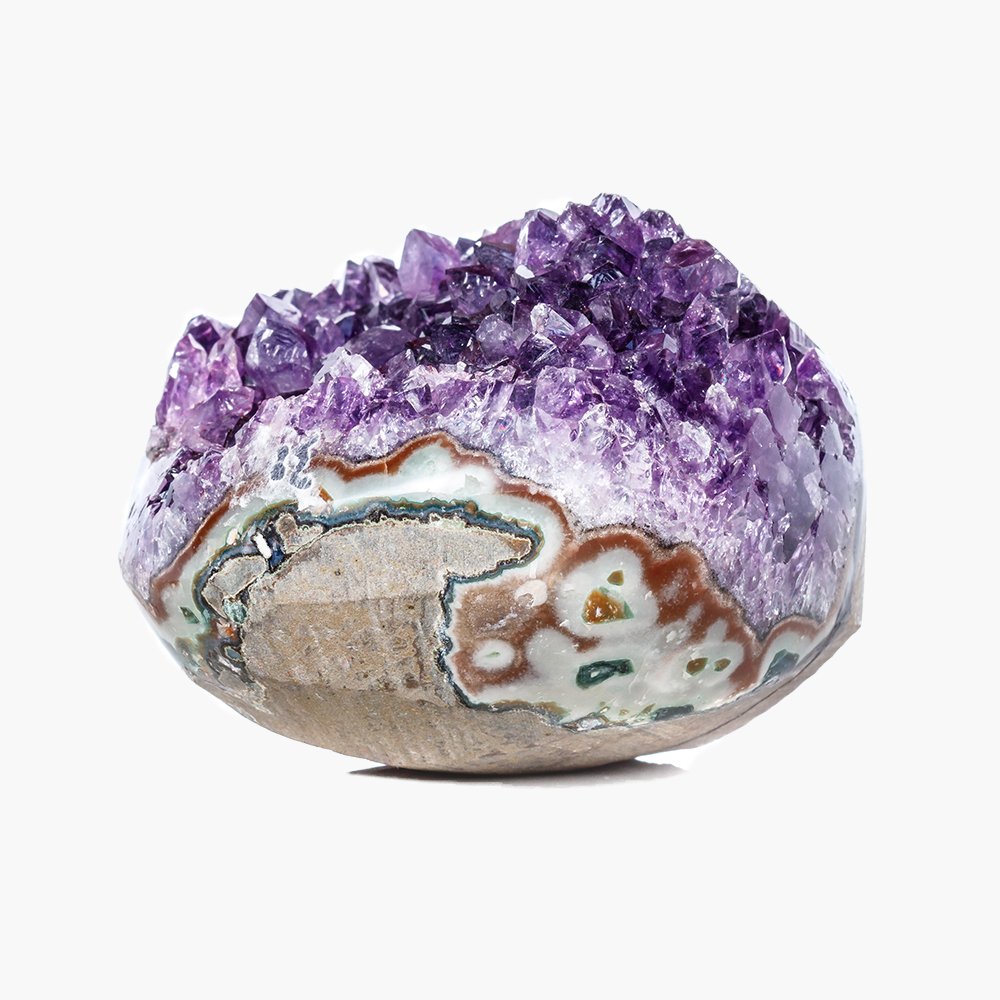
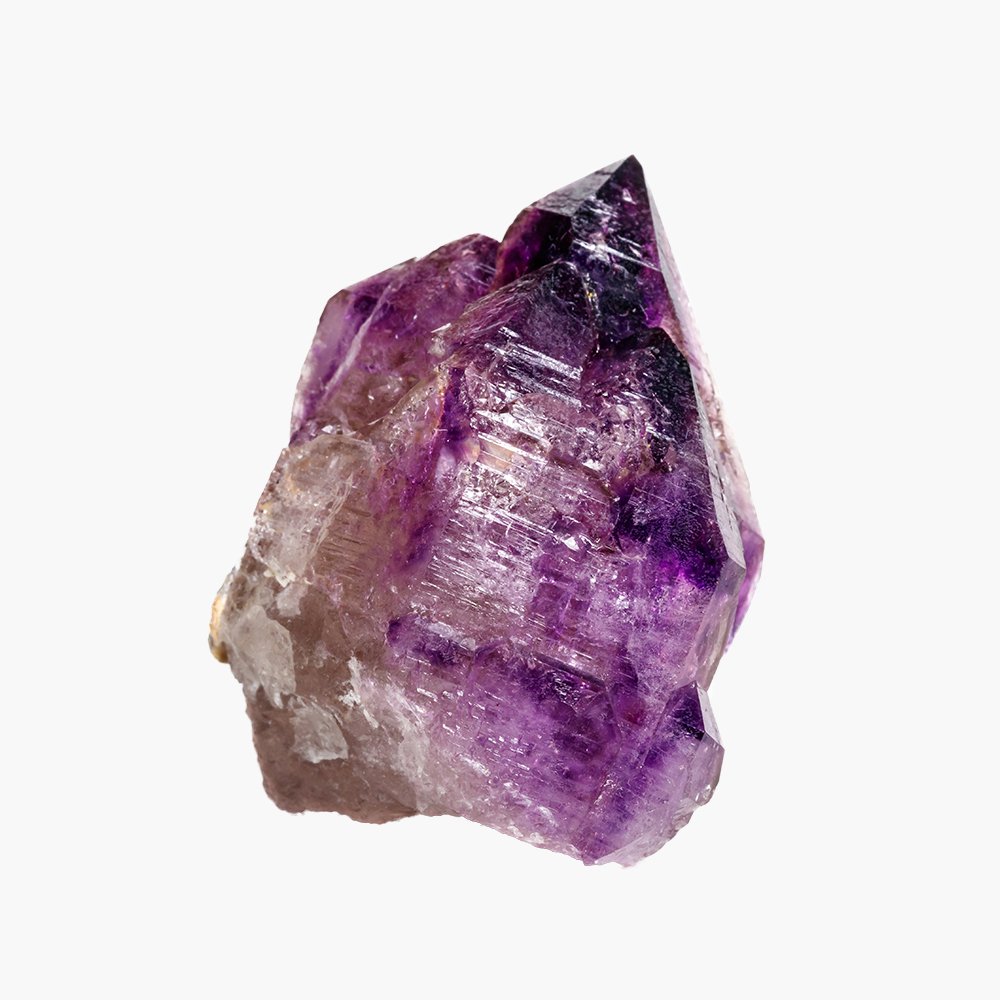
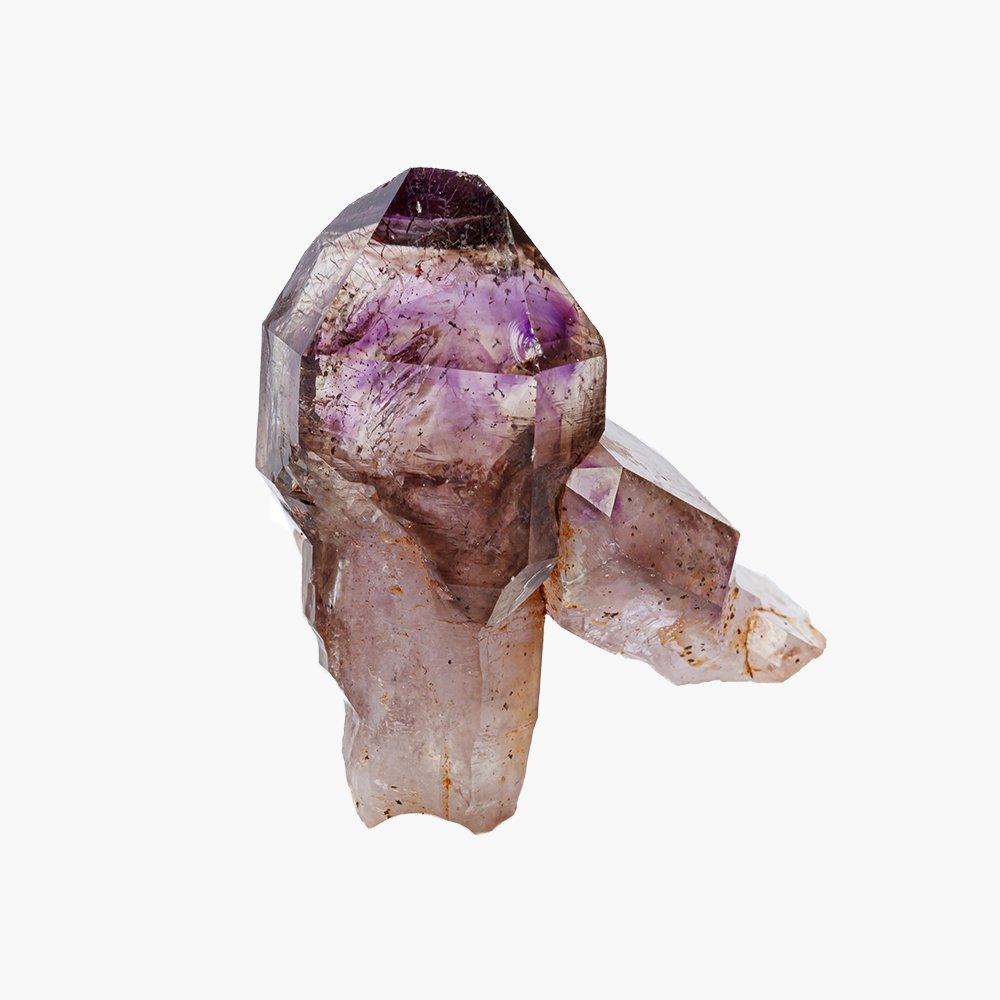
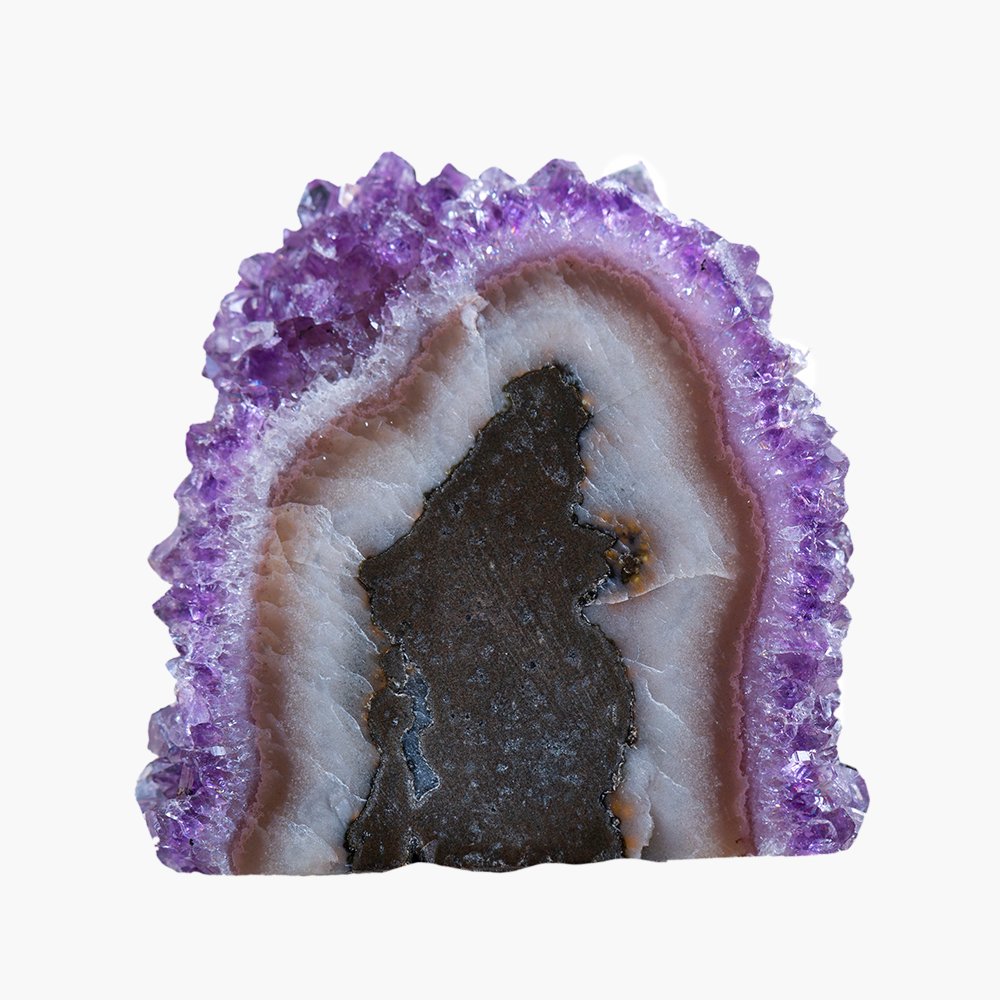
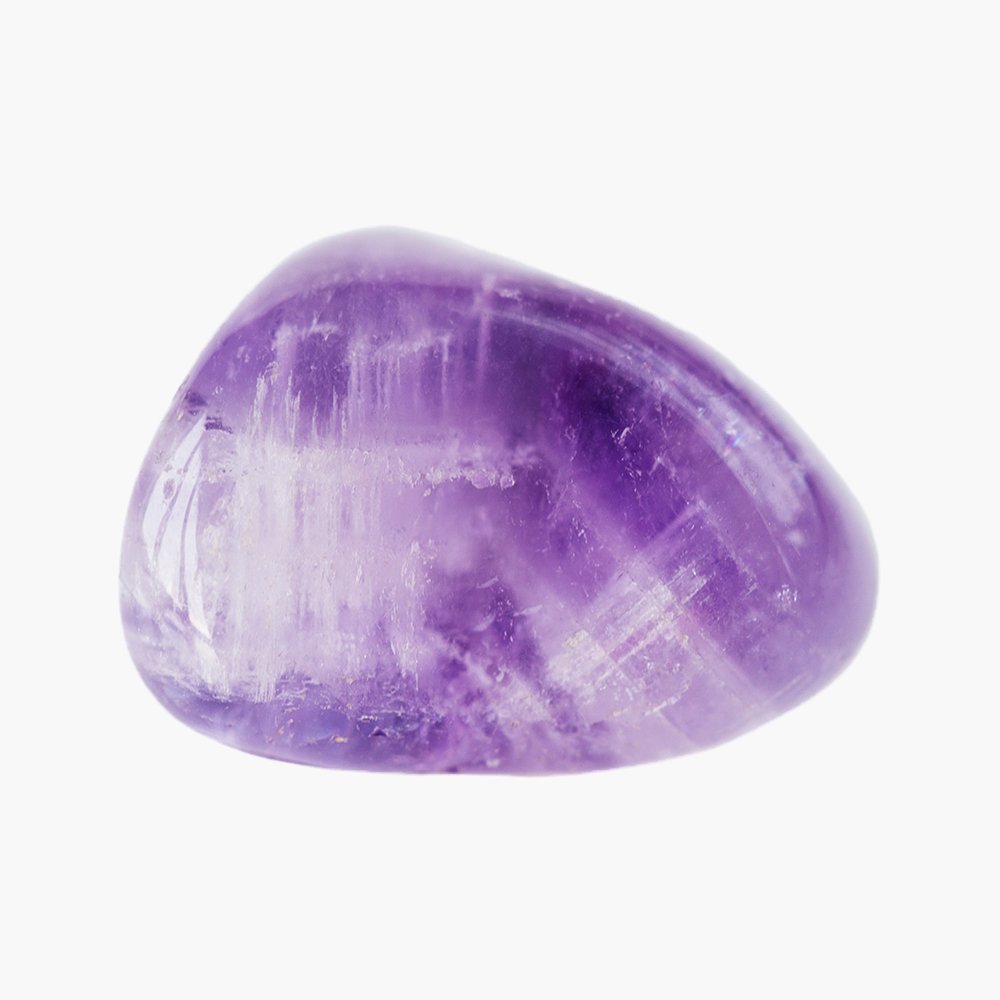
Why We love Amethyst
rich historyRevered for centuries as a protective and spiritual stone.
affordableCompared to many other crystals and gemstones, amethyst remains affordable.
versatileCan be used in everything from jewellery to home decor, making it a versatile and stylish choice.
Shop Amethyst
Looking for a touch of calm and clarity?
Our Amethyst Collection at Self & Others has you covered. From soothing energy to spiritual connection, these pieces are perfect for bringing a little peace into your space.
Other Varieties of Crystalline Quartz














